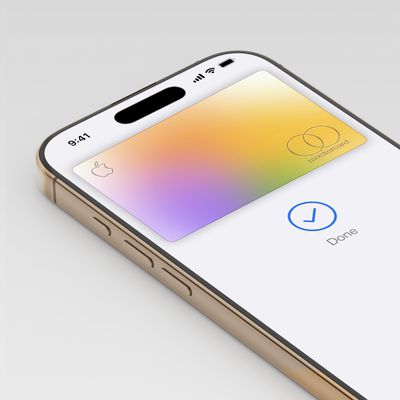New Mac Exploit Easily Bypasses Gatekeeper Security, Could Allow Installation of Malicious Apps
Apple introduced Gatekeeper in 2012, creating it as a method of protection for users against malicious threats by adding various layers of security during installation of Mac apps. The feature is intended to ensure that apps users try to install on their Macs are legitimate and signed by a registered developer, minimizing the threat of malware. But now, a security researcher has discovered a simple method of bypassing Gatekeeper using a binary file already trusted by Apple to attack a user's computer (via Ars Technica).

Gatekeeper is meant solely to check the initial digital certificate when an app is downloaded on a Mac, ensuring that the program has been signed by an Apple-approved developer or at least comes from the Mac App Store itself before allowing the installation to proceed.
"If the application is valid—so it was signed by a developer ID or was (downloaded) from the Mac App Store—Gatekeeper basically says 'OK, I'm going to let this run,' and then Gatekeeper essentially exits," Patrick Wardle, director of research of security firm Synack, told Ars. "It doesn't monitor what that application is doing. If that application turns around and either loads or executes other content from the same directory... Gatekeeper does not examine those files."
Even if Gatekeeper is enhanced to its highest level of security settings, the new exploit can take advantage of a computer. Once the trusted file makes its way past the security program, it can then execute a handful of other malicious programs attached with the rest of the installation and gains the ability to install malicious software such as password-stealing programs, apps that can capture audio and video from a Mac's camera, and botnet software.
The researcher who discovered the exploit sent news of it to Apple about 60 days ago and "believes they are working on a way to fix the underlying cause or at least lessen the damage it can do to end users." Since then, an Apple spokesperson has confirmed the company is working on a patch for the issue and has asked that the identities of the specific files used in the exploit not be disclosed. Wardle plans to showcase his research on the Gatekeeper exploit at the Virus Bulletin Conference on Thursday in Prague.
Popular Stories
Apple's iPhone development roadmap runs several years into the future and the company is continually working with suppliers on several successive iPhone models at the same time, which is why we often get rumored features months ahead of launch. The iPhone 18 series is no different, and we already have a good idea of what to expect for the iPhone 18 Pro and iPhone 18 Pro Max.
One thing worth...
2026 could be a bumper year for Apple's Mac lineup, with the company expected to announce as many as four separate MacBook launches. Rumors suggest Apple will court both ends of the consumer spectrum, with more affordable options for students and feature-rich premium lines for users that seek the highest specifications from a laptop.
Below is a breakdown of what we're expecting over the next ...
CES 2026 has just provided a first glimpse of the folding display technology that Apple is expected to use in its upcoming foldable iPhone. At the event, Samsung Display briefly showcased its new crease-less foldable OLED panel beside a Galaxy Z Fold 7, and according to SamMobile, which saw the test booth before it was abruptly removed, the new panel "has no crease at all" in comparison.
The ...
Though it's been just a few months since iOS 26 launched, we're already hearing rumors about the next-generation version of iOS, iOS 27. iOS 27 will be introduced at Apple's June WWDC 2026 event before it launches in September 2026.
We don't know all of the details about iOS 27 yet, but we do have some information about what to expect.
"Snow Leopard" Update
iOS 27 will apparently focus...
JPMorgan Chase has reached a deal to take over operation of the Apple Card, reports The Wall Street Journal. Barring any "last minute hiccups," the deal should be announced shortly after over a year of negotiations.
Reports began circulating over two years ago that current Apple Card issuer Goldman Sachs was looking to end its partnership with Apple as part of an effort to scale back on...
Logitech users on macOS found themselves locked out of their mouse customizations yesterday after the company let a security certificate expire, breaking both its Logi Options+ and G HUB configuration apps.
Logitech devices like its MX Master series mice and MX Keys keyboards stopped working properly as a result of the oversight, with users unable to access their custom scrolling setup,...
OpenAI today announced the launch of ChatGPT Health, a dedicated section of ChatGPT where users can ask health-related questions completely separated from their main ChatGPT experience.
For more personalized responses, users can connect various health data services such as Apple Health, Function, MyFitnessPal, Weight Watchers, AllTrails, Instacart, and Peloton. Last month, MacRumors discovere...
Apple has lost another senior figure from its Safari team as a lead designer departs for The Browser Company, extending a pattern of high-profile exits from Apple's browser team amid intensifying competition around AI-driven browsing.
Marco Triverio was a lead designer for Safari and has now joined The Browser Company, the developer of the Arc and Dia browsers. The move was confirmed by The...























